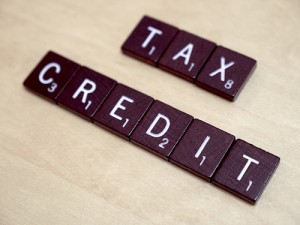Government Health Insurance Subsidy and Your Income Taxes
Mar 25th, 2014
When you’re figuring out how much of a tax credit you may or may not have to pay back to the government, the key word to remember is income. Let’s rewind.
Were you offered a health insurance subsidy?
When you purchased health insurance from the New York State of Health during the open enrollment period, depending on your income, you may have been offered a health insurance subsidy from the government. You qualified for a subsidy if your income fell between 138 percent and 400 percent of the Federal Poverty Level.
Subsidies and receiving a tax credit: How does it work?
To understand why you are receiving a health insurance subsidy, you must know why you qualify first and foremost. You would receive a subsidy based on your income about the Federal Poverty Level, also referred to as the FPL. What does this government word imply? The FPL is how the federal government sets the standards for poverty, basing it on how much you or your family spends on everyday living expenses such as food, clothing shelter, etc. Right now, if the household size is just one person earning $11,670, they are earning 100% of the yearly poverty income, meaning earning just enough to live.
Depending on where your annual income falls above the Federal Poverty Level, a maximum premium contribution percentage of your income will taken out to help pay for the health exchange plan. For example, if you’re just one person in your household and you earn $30,000 a year, you fall in the 250-300 percent group above the Federal Poverty Level.
If you do earn that $30,000, this puts you at 257 percent above the poverty level. The percentage you would have to pay to receive your health exchange plan is 8.27 of your yearly income. Why? If you fall between 250-300 percent, you pay 8.05-9.5 percent of your annual income. If you take your maximum premium contribution and multiply it by your income, you will come up with a number, in this case, $2,480.
Now to estimate your tax credit (the amount you receive back from the government when you file your taxes), let’s pretend you purchase an unsubsidized second-lowest silver plan which costs $3,337. Take the unsubsidized second-lowest silver plan number ($3,337) and subtract it from $2,480 (maximum premium contribution). You should end up with $897. Thus, you will receive $897 back in tax credit.
How much of my subsidy should I take?
If you qualify for a subsidy, here a few questions you should ask yourself while you are shopping.
-
Do I want to take the subsidy in full and apply it to my premium?
-
Do I want to take only a certain percentage and use the rest towards my tax credit?
-
Do I not want to take a subsidy at all and take all of it during the upcoming tax season?
It is important when deciding which option is best for you to properly estimate your income. If you guessed you were going to make a small amount of money and you took the full health insurance subsidy, and you earned more than you stated, you would owe the government money. However, maybe you decided to not take the subsidy because you could not figure out your income for that year. Then, during tax season, you would receive your full tax credit and not have to worry about any false approximations on your income. It is also possible you may go through a qualifying event and, despite if you calculated right on your income, you’ll owe the government money and not receive a tax credit.
House of Representatives Steps In
According to the law entitled, ‘Comprehensive 1099 Taxpayer Protection and Repayment of Exchange Subsidy Overpayment Act of 2011,’ there is a number range and limit for those people receiving a subsidy. For those guesstimating on their income, they can only average so low. This act was written so there would be no improper use of overpayments or subsidies.
This act is helping the federal government from overspending. If the act is kept, as it has been since 2011, the federal government could save $19.9 billion, and taxpayers would save $24.9 billion.
In conclusion, be careful with the income number you give out—a subsidy is meant to help you, not backfire on you.
Related posts from our blog:
No related posts.
Tags: Federal Poverty Level | health insurance subsidy | subsides | tax credit
Posted in: Simon Bukai | Comments Off
